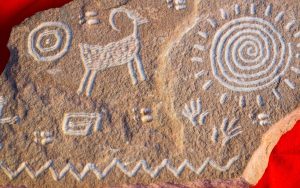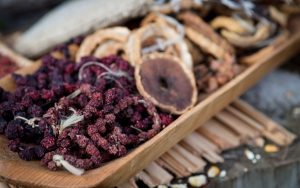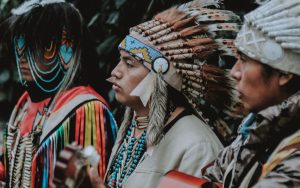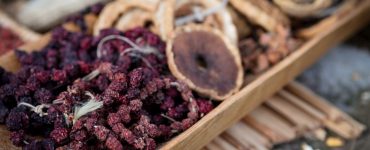The connection between food and health has long been recognized in cultures around the world. Native American cuisine, with its deep roots in tradition and respect for nature, offers a unique perspective on the concept of food as medicine. For centuries, indigenous communities across North America have relied on their traditional diets not only for sustenance but also for promoting wellness and balance in their lives.
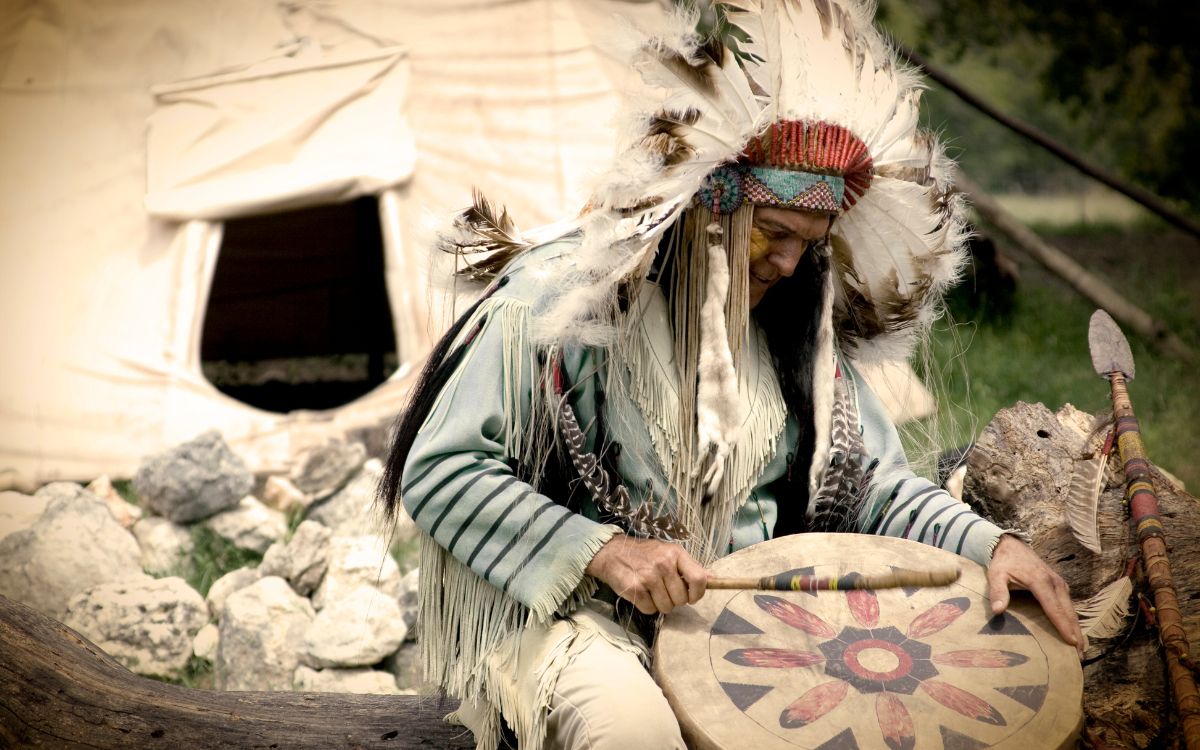
In this blog post, we will delve into the fascinating world of Native American food as medicine, exploring the historical significance of indigenous food traditions, the healing properties of native ingredients, traditional food preparation techniques, and the efforts being made to preserve and revitalize these invaluable culinary practices.
Traditional Native American Diets
Pre-Columbian Diets
Before the arrival of Europeans, Native American diets were diverse and regionally influenced. These diets varied greatly depending on the indigenous cultures and the resources available in their respective regions. Staples included maize (corn), beans, squash, wild game, fish, and foraged plants. These foods formed the foundation of their diets, providing a balance of carbohydrates, proteins, and nutrients essential for their well-being.
Regional Variations
The vast expanse of North America resulted in a wide array of regional variations in Native American diets. From the Southwest to the Great Plains and the Pacific Northwest, different indigenous communities adapted to their unique environments.
This adaptation led to variations in food choices, such as reliance on maize and beans in the Southwest, bison in the Great Plains, and salmon in the Pacific Northwest. Geography and climate played significant roles in shaping the availability and selection of foods for these communities.
The Balanced and Sustainable Nature of Pre-Columbian Diets
One remarkable aspect of traditional Native American diets was their inherent balance and sustainability. The combination of maize, beans, and squash, known as the “Three Sisters,” exemplifies this balance. Maize provided carbohydrates, beans supplied proteins, and squash offered essential vitamins and minerals.
This trio was not only nutritionally complete but also had ecological benefits. The maize stalks provided support for the climbing beans, while the large squash leaves shaded the ground, preventing weed growth and retaining moisture. This harmonious relationship demonstrates the sustainable and symbiotic nature of pre-Columbian diets.
Spiritual and Cultural Significance of Traditional Diets
Traditional Native American diets were not solely about sustenance but held deep spiritual and cultural significance. Food was seen as a sacred gift from the Earth, and the act of gathering, preparing, and consuming food was infused with ceremonial rituals.
These rituals fostered a sense of gratitude, respect, and connection to the land and its resources. By honoring their traditional diets, indigenous communities maintained a profound relationship with nature and celebrated their cultural heritage.
Challenges and Preservation Efforts
Despite the historical significance and nutritional value of traditional Native American diets, colonization and the forced assimilation of indigenous peoples disrupted these food systems. The introduction of European foods and the displacement of Native Americans from their ancestral lands led to the loss of traditional food knowledge and practices.
However, in recent years, there has been a growing movement to preserve and revitalize indigenous food systems. Through initiatives focused on food sovereignty, cultural education, and sustainable farming practices, indigenous communities are reclaiming their food heritage and ensuring its continuity for future generations.
Healing Foods and Medicinal Herbs
Traditional Native American Medicinal Practices
Native American cultures have long recognized the healing properties of food and medicinal herbs. Traditional medicine intertwined with spirituality, viewing health as a holistic concept encompassing physical, mental, and spiritual well-being.
Native American healers, often referred to as medicine men or women, possessed extensive knowledge of medicinal plants and their therapeutic uses. They understood the power of nature to restore balance and promote healing.
Native American Superfoods
Within the realm of Native American food as medicine, certain ingredients stand out for their exceptional nutritional profiles and healing properties. These “superfoods” include chia seeds, wild rice, amaranth, and many others.
Chia seeds, for example, are rich in omega-3 fatty acids and fiber, offering numerous health benefits. Wild rice is packed with essential minerals, while amaranth is a complete protein source. Incorporating these superfoods into our diets can enhance our overall well-being.
Medicinal Plants and Herbs
Native American cultures have a profound understanding of the medicinal plants that flourish in their respective regions. Sage, sweetgrass, cedar, echinacea, and many other herbs play essential roles in traditional healing practices.
Sage is revered for its cleansing properties, both physically and spiritually. Sweetgrass is used in purification rituals, while cedar is known for its antimicrobial properties. Echinacea is valued for its immune-boosting effects. Learning about these medicinal plants opens a world of natural remedies and alternative healing methods.
Cultivating Healing Gardens
Recognizing the importance of medicinal plants, Native American communities have traditionally cultivated healing gardens. These gardens serve as repositories of knowledge, providing a sustainable source of medicinal herbs.
They also contribute to the preservation of traditional ecological knowledge and promote self-sufficiency within indigenous communities. By creating our own healing gardens, we can connect with nature, cultivate valuable healing resources, and foster a sense of well-being in our own surroundings.
Culinary Uses and Recipes
Beyond their medicinal properties, many Native American foods and herbs are delicious and versatile in the kitchen. Discovering culinary uses for these ingredients allows us to incorporate them into our daily meals.
From wild rice pilaf to chia seed puddings and savory dishes flavored with herbs like sage and cedar, Native American-inspired recipes offer a unique fusion of flavors and an opportunity to explore the rich culinary heritage of indigenous cultures. These recipes not only nourish the body but also deepen our appreciation for the cultural and healing significance of Native American food.
Traditional Food Preparation Techniques
Cooking Methods
Traditional Native American cooking methods were diverse and varied, reflecting the ingenuity of indigenous communities in making the most of their available resources. Baking, steaming, and smoking were commonly used techniques.
Baking involved cooking food in hot ashes or on hot stones, while steaming utilized heated rocks or enclosed containers to cook food with steam. Smoking, a method used for preservation, involved slow cooking over smoldering fires.
Preservation Methods
Native American communities developed ingenious techniques to preserve their food for times of scarcity. Drying was a common method used to remove moisture from foods such as meat, fish, and berries, extending their shelf life. Fermentation was another preservation method, transforming foods like corn into sourdough-like preparations. Smoking not only preserved food but also added distinct flavors.
The Impact of Cooking Methods on Nutrient Retention
Traditional Native American cooking methods were not only effective in preparing food but also had an impact on nutrient retention. For instance, baking foods in hot ashes helped preserve their nutritional content by reducing the loss of water-soluble vitamins.
Steaming, a gentle cooking method, retained more nutrients compared to boiling, which could lead to nutrient leaching. These cooking techniques prioritized nutrient preservation and bioavailability.
Sacred Food Rituals
Native American food preparation was not merely a practical task but often intertwined with spiritual and cultural rituals. Gathering and preparing food were seen as sacred acts, accompanied by prayers and ceremonies.
The sharing of meals fostered a sense of community and unity, deepening connections with the land, ancestors, and spirits. These sacred food rituals honored the nourishing power of food and reinforced cultural values.
Passing Down Traditional Food Techniques
The transmission of traditional food preparation techniques was a vital aspect of Native American cultural preservation. Elders and community members played a crucial role in passing down knowledge and skills to younger generations.
Through storytelling, hands-on demonstrations, and apprenticeship, the art of traditional food preparation was kept alive, ensuring the continuity of culinary practices and cultural heritage for future generations.
Modern Challenges and Revitalization Efforts
Impact of Colonization
The colonization of Native American lands brought significant challenges to their food systems and cultural practices. Forced assimilation, land dispossession, and the introduction of foreign foods disrupted traditional diets and food sovereignty. The loss of ancestral lands and the suppression of indigenous food systems had profound implications for health, cultural identity, and overall well-being.
Loss of Traditional Food Knowledge
As a result of colonization, the knowledge and practices surrounding traditional Native American food were eroded. The intergenerational transmission of food wisdom was disrupted, leading to a disconnection from ancestral culinary traditions. The loss of this knowledge meant not only a diminished understanding of the health benefits of traditional diets but also a weakened cultural identity and a sense of belonging.
Food Sovereignty Movements
In recent years, there has been a resurgence of efforts to reclaim and revitalize indigenous food systems. Food sovereignty movements, led by Native American communities and organizations, aim to regain control over their food production, distribution, and consumption. These movements emphasize self-determination, cultural revitalization, and the promotion of healthy, sustainable, and culturally appropriate food choices.
Revival of Traditional Foods
The revitalization of traditional Native American foods has gained momentum in culinary circles. Indigenous chefs and food entrepreneurs have played a crucial role in reimagining and reintroducing these foods to a broader audience. By infusing traditional ingredients and cooking techniques with contemporary culinary practices, they create a fusion of flavors that celebrates the richness and diversity of Native American cuisine.
Fusion of Traditional and Contemporary Culinary Practices
The fusion of traditional and contemporary culinary practices has become a hallmark of modern Native American cuisine. Indigenous chefs creatively blend ancestral ingredients with modern cooking styles, resulting in innovative and delicious dishes. This fusion not only attracts wider interest in Native American foods but also serves as a platform for cultural expression, bridging the gap between tradition and the demands of the modern world.
Preserving Ecological Knowledge
The revitalization of Native American food traditions goes hand in hand with the preservation of ecological knowledge. Traditional food systems are deeply intertwined with sustainable farming practices, land stewardship, and respect for biodiversity.
By reconnecting with and preserving this ecological knowledge, Native American communities contribute to the overall well-being of both their communities and the planet, promoting sustainability and resilience for future generations.
Integrating Native American Food Wisdom into Our Lives
Embracing Cultural Appreciation
Incorporating Native American food wisdom into our lives begins with a mindset of cultural appreciation and respect. It involves acknowledging and honoring the rich heritage and knowledge of indigenous communities. By learning about their traditional foods, culinary practices, and medicinal plants, we can deepen our understanding of their cultural contributions and foster a spirit of appreciation for their wisdom.
Exploring Indigenous Ingredients
One way to integrate Native American food wisdom into our lives is by exploring indigenous ingredients. Incorporating staples like maize, beans, squash, wild game, and medicinal herbs into our diets connects us to the nutritional richness of traditional Native American diets. By sourcing these ingredients sustainably and supporting indigenous producers, we can celebrate and promote the cultural significance of these foods.
Learning Traditional Preparation Techniques
Learning and practicing traditional Native American food preparation techniques allows us to experience the depth of culinary wisdom embedded within these cultures. Whether it’s baking on hot stones, smoking foods, or drying ingredients, these techniques offer unique flavors, textures, and preservation methods. By embracing these techniques, we honor ancestral knowledge and enhance our culinary repertoire.
Supporting Indigenous Food Sovereignty
Supporting indigenous food sovereignty initiatives and organizations is a tangible way to integrate Native American food wisdom into our lives. By advocating for indigenous communities’ rights to control their food systems, promoting sustainable farming practices, and purchasing products from indigenous producers, we contribute to the preservation and revitalization of traditional food cultures.
Cultivating Healing Spaces
Creating our own healing spaces, such as gardens or small herb plots, allows us to connect with nature and cultivate ingredients that align with Native American food wisdom. Growing medicinal herbs, heirloom varieties, or indigenous crops fosters a deeper connection to the land, promotes self-sufficiency, and offers opportunities for personal healing and well-being.
Embracing Mindful Eating
Integrating Native American food wisdom goes beyond ingredients and techniques; it encompasses mindful eating practices. By approaching meals with gratitude, mindfulness, and an awareness of the interconnectedness between food, health, and the environment, we can deepen our relationship with the nourishing power of food and cultivate a sense of balance and harmony in our lives.
Sharing and Educating Others
Sharing our knowledge and experiences of Native American food wisdom is essential for promoting cultural understanding and appreciation. By educating others about the significance of indigenous foods, traditional preparation techniques, and the healing properties of native ingredients, we can inspire others to embrace and respect the diverse culinary traditions that enrich our world.
Honoring the Interconnectedness of All Things
Above all, integrating Native American food wisdom into our lives requires recognizing and honoring the interconnectedness of all things. By embracing the teachings of indigenous cultures, we gain a deeper understanding of our relationship with nature, the importance of sustainable practices, and the nourishment that food provides for both our bodies and our spirits. It is through this reverence and appreciation that we can truly embody the wisdom of Native American food as medicine.
Conclusion
Native American food traditions provide us with more than just nourishment; they offer a profound connection to our collective history and the healing power of nature. As we conclude our exploration of Native American food as medicine, we are reminded of the invaluable wisdom embedded within these culinary traditions. From the sustainable and balanced pre-Columbian diets to the knowledge of medicinal plants and the sacred food rituals that foster a sense of community and well-being, Native American food offers a holistic approach to health.

